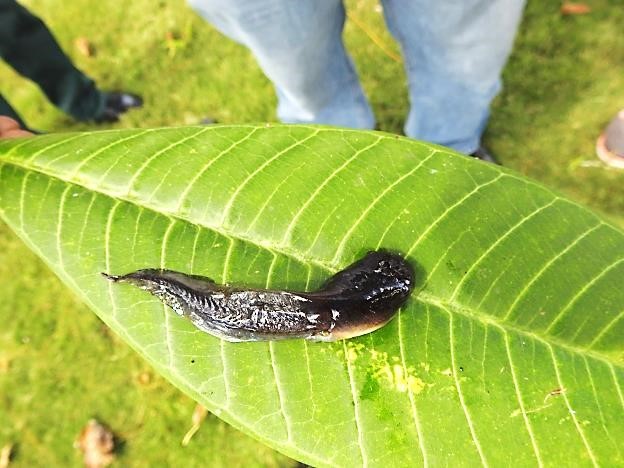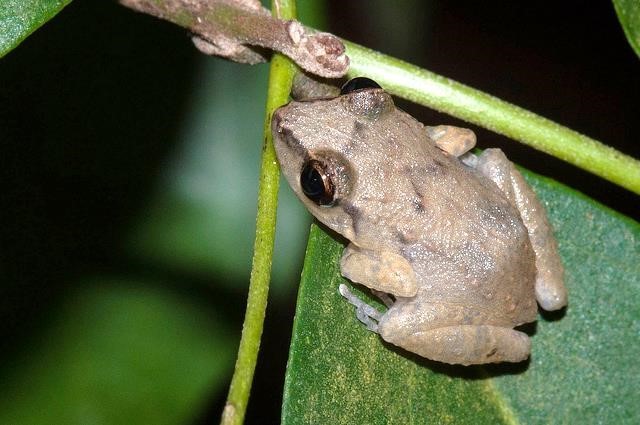CHARLESTOWN, Nevis, Jun 13 2017 – A team of researchers from the Environmental Awareness Group in Antigua, hired by the Government of St. Kitts and Nevis, and the United Nations Development Programme, visited the island of Nevis on February 13, 2017. There they found a large tadpole — a tadpole is the larval stage of amphibians, and some species spend part of their life cycle in water. Team members found this tadpole in an old sugar factory boiling copper

The tadpole was about 7cm long, which was a puzzle, because the frogs and toads of Nevis do not have young that reach this size. There was a collective “hmm”, and the group decided to keep the animal to examine further. It was placed in a container of water for safekeeping. The team later collected another specimen from that copper, and one other from Cat Ghut area on the north side of the island, and added these animals to the collection.
So, what was this strange species? Nevis has three known amphibians, including the Marine Toad (Rhinella marina), the largest of the species, and one deliberately introduced from Guyana in South America to rid the cane fields of the destructive cane beetle (Lepidiota frenchi). This never really worked since the Toad found other native wildlife even more delectable and easy to capture.

Then there is the native, small Lesser Antillean Whistling Frog (Eleutherodactylus johnstonei), which is a small frog that whistles and helps to soothe so many people to sleep at night in these islands. It is a tiny frog, growing from 1.7 to 3.5 cm long. It lays eggs in moist leaf litter and under rocks and produces tiny froglets instead of making tadpoles.

The other species is the recently introduced Cuban Tree Frog (Osteopilus septentrionalis), which arrived on Nevis back in the 1990s, grows to be about 15 cm long when fully mature, while the tadpoles, which spend their time in water, grow up to about 2 cm. They often occupy temporary pools and bodies of water, and mature rapidly, but can also be found in permanent pools, ponds, streams, tanks and cisterns.

So, as the team looked at the known characteristics of these three amphibians, we realized that the tadpoles we found were far larger than any of the three species. They had grown to about 9 cm, which is more than 4 times what is known for the largest tadpoles on the island, the Cubans. It was then that we decided to keep these tadpoles and rear them so that we could determine what they may mature into.
In stepped Kate Orchard, local scientist, environmentalist, researcher and retired teacher. Kate agreed to raise the tadpoles to adulthood to see what they are. Percival Hanley, amateur aquarist and Manager of the Brimstone Hill Fortress National Park Society (BHFNPS) provided her with a suitable glass enclosure, and she has been raising these “monsters” ever since.
Only two specimens of this large tadpole survive, and now they have developed back legs, and are showing signs of front limbs.





